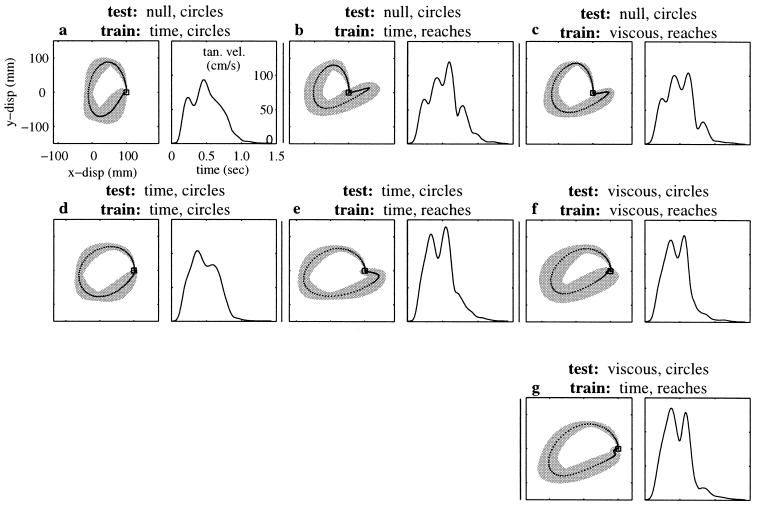Figure 3.
Results of test for generalization of learning time-dependent forces. (a) Average (±SD) aftereffect circle (trajectory and tangential velocity profile) made in the null field after training in the time-dependent field with circles (n = 16). (b) Average aftereffect circle made in the null field after training in the time-dependent field with reaching movements (n = 16). (c) Average aftereffect circle made in the null field after training in the velocity-dependent field with reaching movements (n = 17). (d) Average circle made in the time-dependent field after training in the same field with the same movements (n = 26). (e) Average circle made in the time-dependent field after training in the same field with reaching movements (n = 30). If the actual time series of forces was learned during the adaptation shown in Fig. 2, the trajectories comprising the averages in d and e should be the same as should the circles in a and b, but in fact both are significantly different (P < 0.05, all subjects). (f) Average circle made in the velocity-dependent field after training in the same field with reaching movements (n = 31). (g) Average circle made in the velocity-dependent field after training in the time-dependent field with reaching movements (n = 28). There is no statistical difference between either the trajectories comprising the averages in f and g or between the aftereffect circles in b and c (P > 0.05, all subjects). These results are consistent across all subjects.

